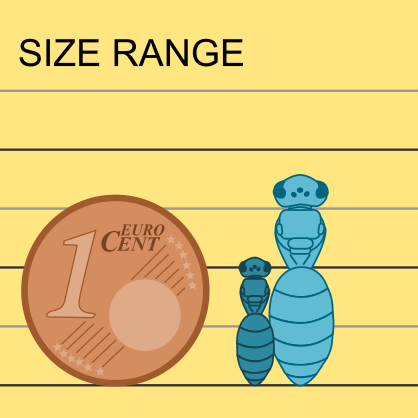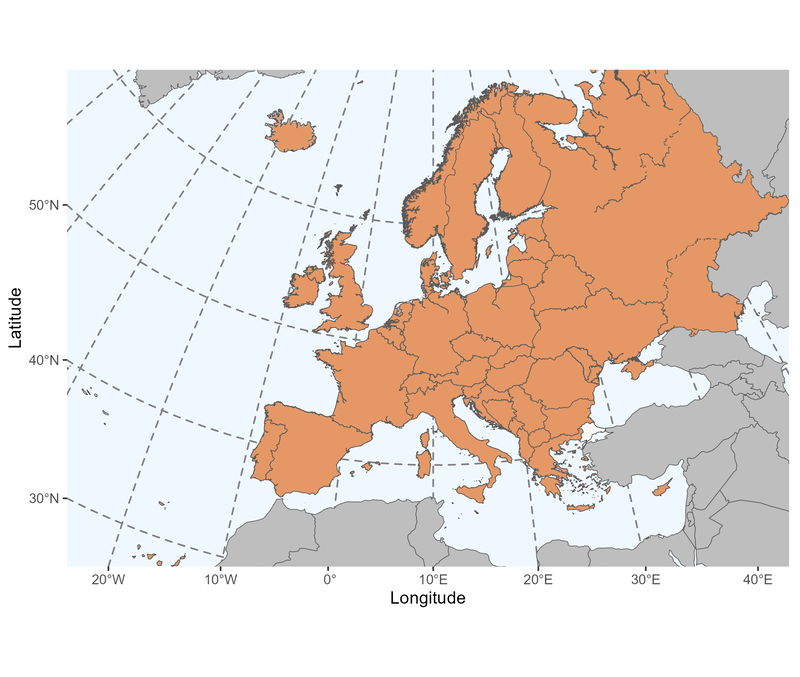Author: Linnaeus, 1758
|
Type species: Apis mellifica Linnaeus, 1761 = Apis mellifera Linnaeus, 1758, by designation of Latreille, 1810: 439.
Synonyms: Apicula Rafinesque, 1814; Apiarus Rafinesque, 1815. |
Clade: Anthophila
Family: Apidae Subfamily: Apinae Tribe: Apini |
|
Distinctive traits
|
Pictures of distinctive traits
|
Morphologically close genera, and how to distinguish them:
Several wild bee species look superficially like Apis mellifera. A closer look at Apis mellifera's distinctive traits can easily prevent such a confusion.
Andrena males have normal eyes, not enlarged neither touching at the top of the head.
Halictus males have normal eyes, not enlarged neither touching at the top of the head.
Several wild bee species look superficially like Apis mellifera. A closer look at Apis mellifera's distinctive traits can easily prevent such a confusion.
- Apis - Andrena
Andrena males have normal eyes, not enlarged neither touching at the top of the head.
- Apis - Colletes
- Apis - Halictus
Halictus males have normal eyes, not enlarged neither touching at the top of the head.
- Apis - Megachile, Hoplitis or Osmia
- Apis - Melitturga
General comments on Apis species identification
There is only one single species of Apis in Europe. While there may be different races of Apis mellifera recognized in Europe, every Apis can be distinguished from the other European species of Anthophila using the same traits.
There is only one single species of Apis in Europe. While there may be different races of Apis mellifera recognized in Europe, every Apis can be distinguished from the other European species of Anthophila using the same traits.
Apis species found in Europe (Ghisbain et al. 2023):
Apis mellifera Linnaeus, 1758.
Apis mellifera Linnaeus, 1758.
Page contributors:
You noticed a mistake? You have a suggestion to improve this page?
Don't keep it to yourself, contact us and become a contributor to IDmyBee!
References used to write this page:
- Adrien Perrard (Dec. 2023)
- Adrien Perrard (Dec. 2019)
You noticed a mistake? You have a suggestion to improve this page?
Don't keep it to yourself, contact us and become a contributor to IDmyBee!
References used to write this page:
- Ghisbain, G., Rosa, P., Bogusch, P., Flaminio, S., Le Divelec, R., Dorchin, A., Kasparek, M., Kuhlmann, M., Litman, J., Mignot, M., Müller, A., Praz, C., Radchenko, V.G., Rasmont, P., Risch, S., Roberts, S.P.M., Smit, J., Wood, T.J., Michez, D. & Reverte, S. (2023). The new annotated checklist of the wild bees of Europe (Hymenoptera: Anthophila). Zootaxa, 5327(1), 1-147.
- Michener, C.D. 2007. The Bees of the World, 2nd Edition. The John Hopkins University Press, Baltimore.
- Michez D., Rasmont P., Terzo, M., Vereecken, N. 2019. Abeilles d'Europes. Hymenoptères d'Europes, Volume 1. N.A.P. Editions.
- Nieto, A., Roberts, S. P., Kemp, J., Rasmont, P., Kuhlmann, M., García Criado, M., ... & Michez, D. 2014. European red list of bees. Luxembourg: Publication Office of the European Union, 98. (IUCN 2014)
- Rasmont, P., Devalez, Jelle, Pauly, A., Michez, D. & Radchenko, V.G. 2017. Addition to the checklist of IUCN European wild bees (Hymenoptera: Apoidea). Annales de la Société entomologique de France 53: 17-32.



